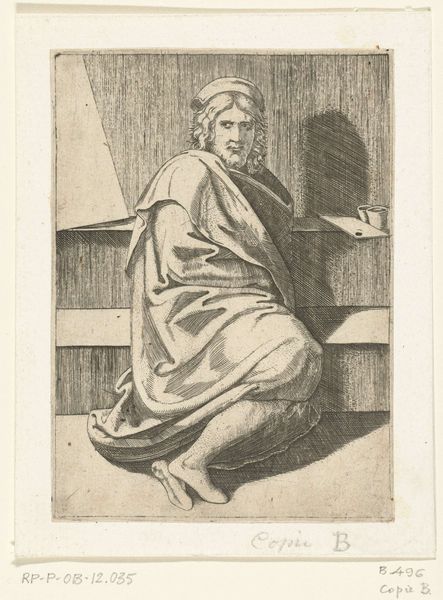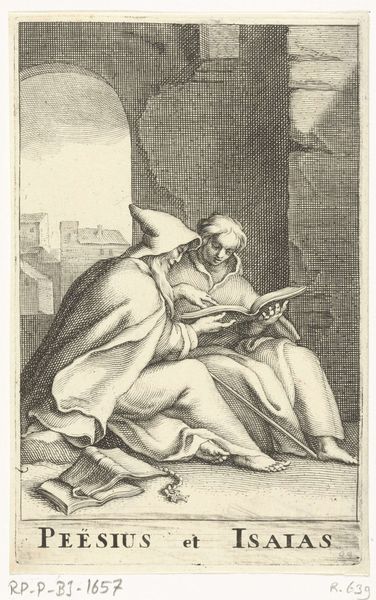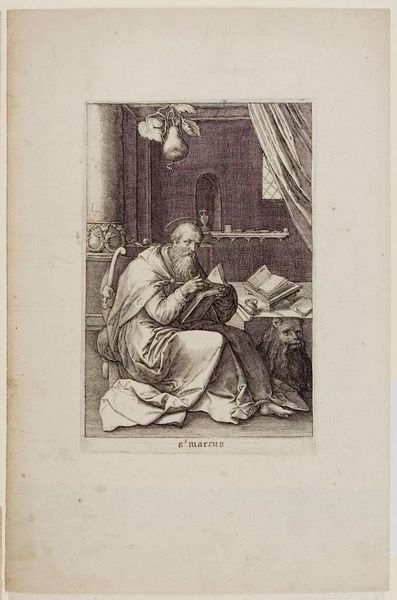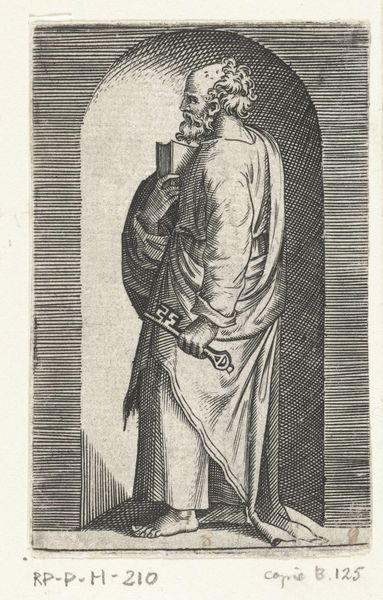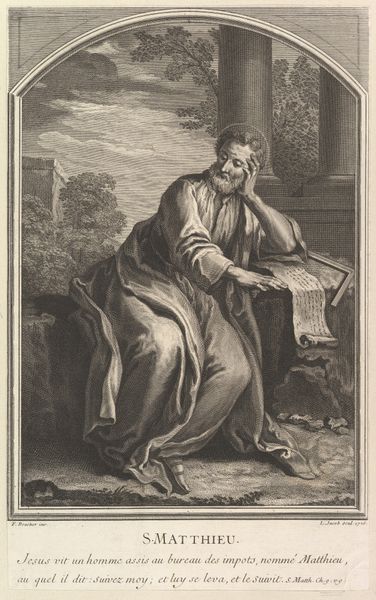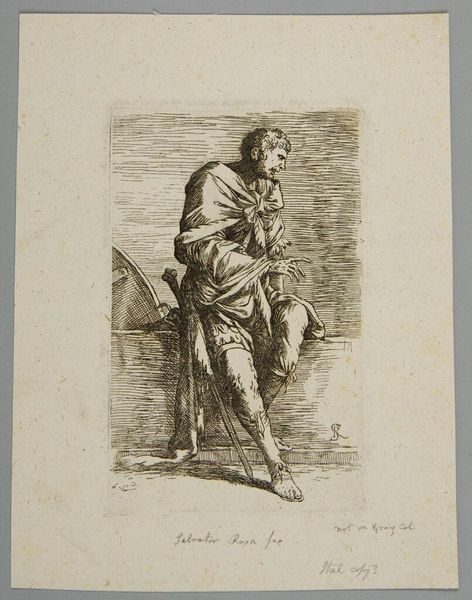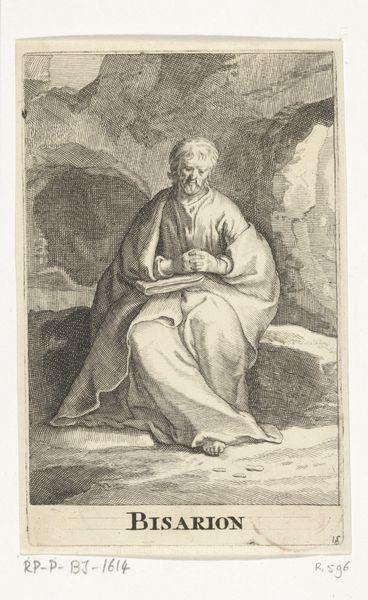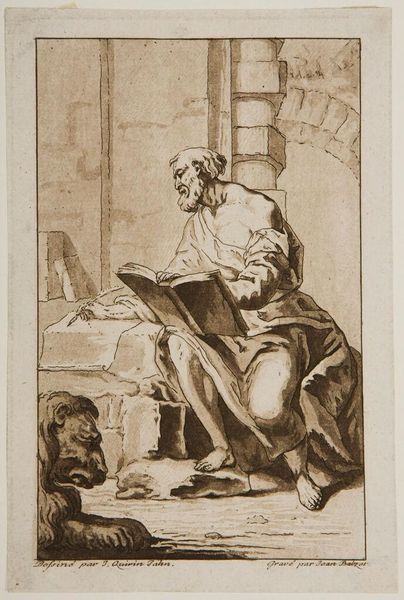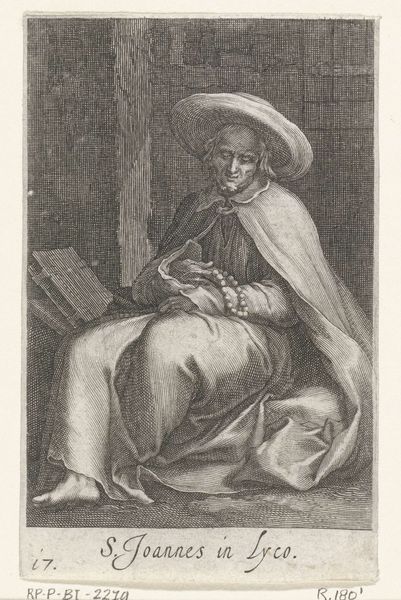
print, engraving
#
portrait
#
baroque
# print
#
classical-realism
#
history-painting
#
academic-art
#
engraving
#
realism
Dimensions: height 308 mm, width 206 mm
Copyright: Rijks Museum: Open Domain
Curator: Here we have Richard Collin's "Belisarius," an engraving dating from 1675 to 1680. It resides here at the Rijksmuseum. Editor: The desolation conveyed is striking; the lines create a deeply melancholic atmosphere. There is a palpable sense of loss about this figure. Curator: Precisely. Collin masterfully employs light and shadow, observe the tenebrism—to emphasize the figure's emotional state. His precise, controlled lines articulate the texture of the garments and the rough-hewn stone around Belisarius. This is neoclassical, wouldn't you agree, in its idealisation of form? Editor: From a material perspective, let’s consider the act of engraving itself. The sheer labor involved, meticulously carving those fine lines into a metal plate. The process is indirect; a mediation between the artist’s vision and the final print, revealing both control and constraint within the system of production and reproduction of images. Curator: A very important consideration. What's particularly engaging here, as a history painting, is how Collin uses a print medium, to depict a classical subject—Belisarius—the celebrated Byzantine general, now reduced to poverty and blindness as the story tells it. Editor: The visual narrative hinges on that staff he holds. A tactile object representing Belisarius's dependency, the wood speaks of simple needs, labor, but also abandonment— contrasting starkly with his previous status as a military leader. His worn sandals speak also about decline. The act of producing and circulating images like this serves to solidify not only his fall but the value and purpose that art plays in cementing cultural memory and disseminating lessons about power and hubris. Curator: An incisive reading. The semiotics of poverty are very thoughtfully expressed here. The careful modelling of the figure certainly elevates Collin's engraving. We observe how historical subjects offer endless interpretation in art. Editor: Ultimately, a detailed, yet bleak artwork about the inherent contradictions within the experience of labour and power.
Comments
No comments
Be the first to comment and join the conversation on the ultimate creative platform.
